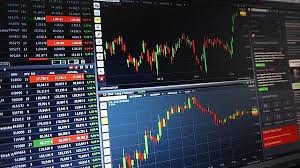Price Action is a method of technical analysis that focuses on the price movements of an asset or currency pair. Instead of relying on complex technical indicators, price action seeks to understand price patterns based on past movements. This approach heavily depends on direct observation of price charts and market movements, reflecting the market's reactions to trader sentiment.
Price Action Is Not a Trading System
Not a Rigid System: Price action is often misunderstood as a rigid trading system with strict rules. In reality, it resembles a discretionary trading approach that relies on the trader's experience and intuition. There are no algorithms or software solely based on price action. Traders who use price action must be able to read and interpret price charts flexibly.
Reliance on Experience: Unlike indicator-based trading systems that provide clear signals, price action requires experience and practice to master. Direct observation of price charts and movement patterns is crucial in price action analysis.
Price Action Is Universal and Consistent
A Time-Tested Method: Price action is not a new method. The use of candlestick charts for price analysis dates back to the 18th century in Japan. While modern technical indicators are widely used, the fundamental principles of price action remain relevant. This indicates that price action can be utilized across various market conditions throughout history.
Continuity and Consistency: Although there may be periods when this method seems to underperform, price action remains a consistent approach. The price patterns and formations always reflect market sentiment, even if the outcomes are not instant or always meet expectations.
Keys to Understanding Price Action
Consistency and Discipline: Mastering price action requires consistency and discipline in practice. You need to invest time in studying various price patterns and the market's reactions to them.
Interpretation Based on Historical Data: Price action provides information based solely on past price movements. This means that while price patterns offer indications, there is no guarantee that future price movements will follow the same patterns.
Direct Observation: Frequent and direct observation of price charts is essential. Experience in reading charts will enhance your understanding of market sentiment.
Learning from Patterns: Familiarize yourself with various price action setups, such as candlestick patterns, support and resistance levels, and chart patterns like head and shoulders, double tops/bottoms, and others. These are foundational for predicting price movements based on established patterns.
Do Not Rely Solely on Patterns: While price action patterns provide important signals, they should be combined with knowledge of market conditions, fundamental news, and other factors. This combination will offer a more comprehensive view of market direction.
Price action is a powerful tool in technical analysis that emphasizes understanding price movements through direct observation and pattern analysis. While it does not utilize technical indicators, this method requires dedication and experience to truly understand and apply it effectively. By consistently practicing and studying price patterns and market sentiment, traders can enhance their ability to make better trading decisions.

